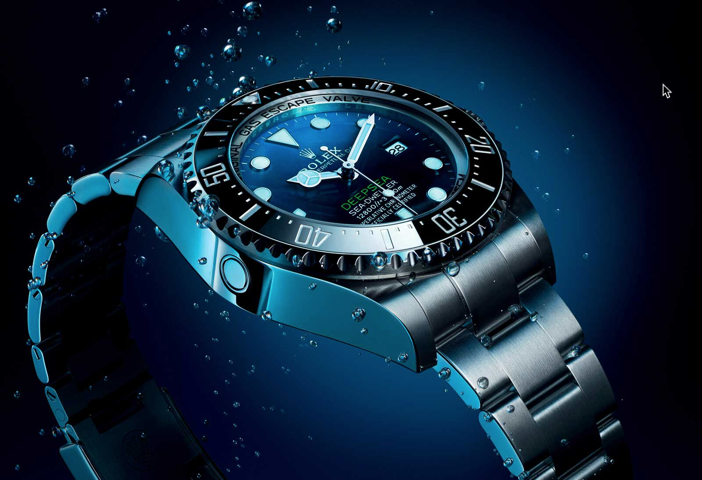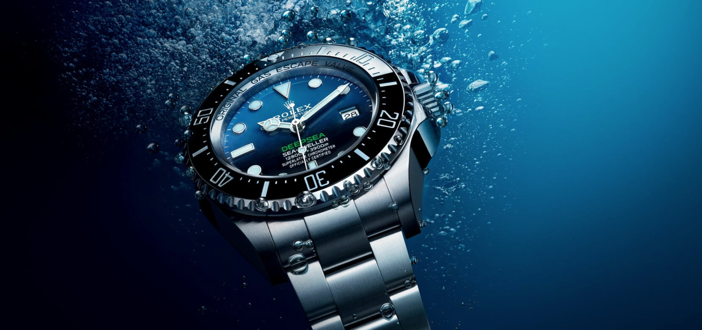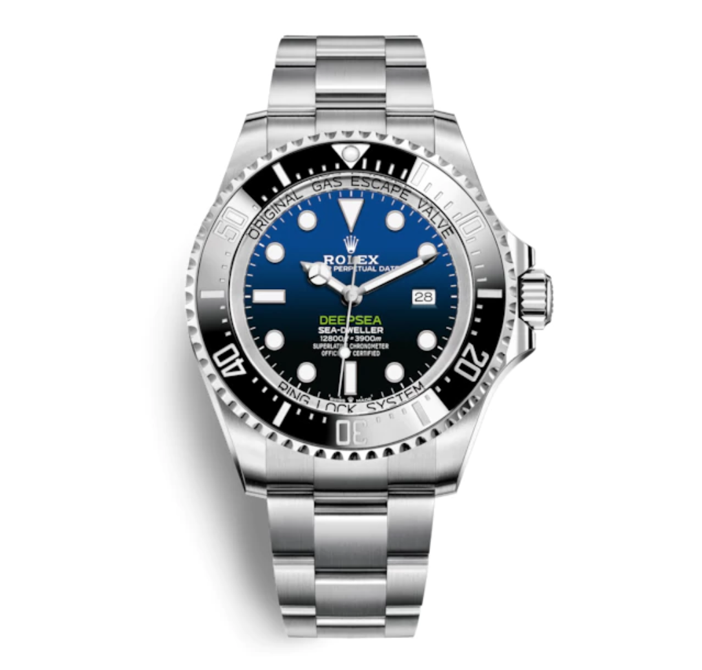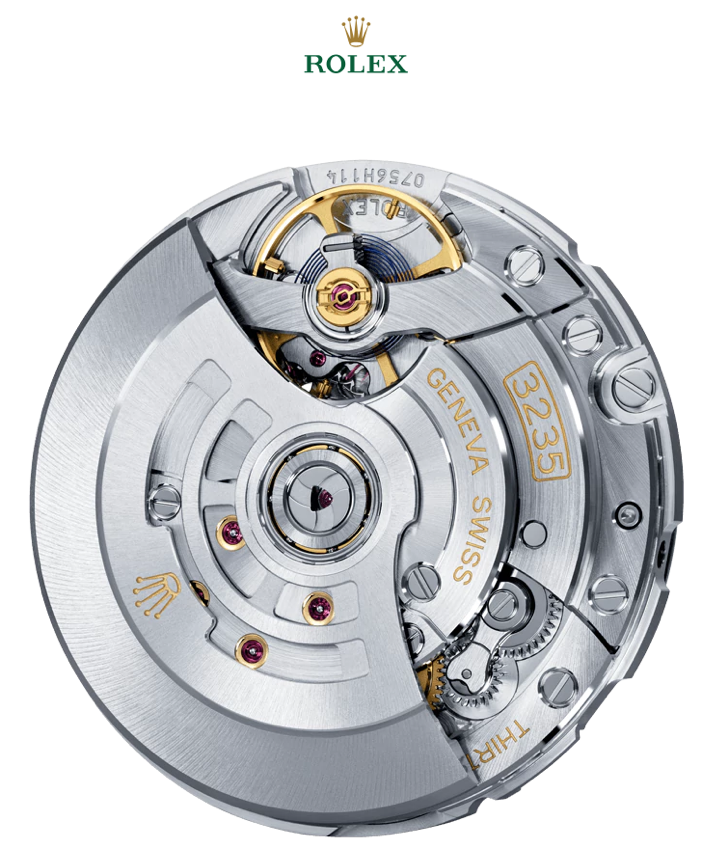
Rolex is unveiling the new Oyster Perpetual Rolex Deepsea ($12,550). It features a 44 mm case with redesigned lugs and sides and a broader Oyster bracelet, as well as a correspondingly adapted Oysterlock folding safety clasp. This professional divers’ watch, is equipped for the first time with calibre 3235, at the forefront of watchmaking technology.

The new Rolex Deepsea is made of Oystersteel, and sports a D-blue dial with a deep-blue to pitch-black gradient. This dial was launched in 2014 on a commemorative version of the watch in tribute to the DEEPSEA CHALLENGE expedition. On this journey, partnered by Rolex and the National Geographic Society, film-maker and explorer James Cameron descended 10,908 metres (35,787 feet) to the ocean’s deepest point, located in the Mariana Trench.
Like all Rolex watches, the new Rolex Deepsea carries the Superlative Chronometer certification, which ensures singular performance on the wrist.

The new Rolex Deepsea is equipped with calibre 3235, a new-generation movement entirely developed and manufactured by Rolex. A consummate demonstration of Rolex technology, at the forefront of the art of watchmaking, this self-winding mechanical movement offers fundamental gains in terms of precision, power reserve, resistance to shocks and magnetism, convenience and reliability. It incorporates the Chronergy escapement patented by Rolex, which combines high energy efficiency with great dependability. Made of nickel-phosphorus, it is also insensitive to magnetic interference. The oscillator, the true heart of the watch, has a blue Parachrom hairspring. Manufactured by Rolex in an exclusive paramagnetic alloy, the Parachrom hairspring is up to 10 times more precise than a traditional hairspring in case of shocks. It is also fitted with a Rolex overcoil, ensuring its regularity in any position.

Before they return to the open air, professional divers heading for the surface after a deep saturation dive must spend time in a decompression chamber, where they breathe a gas mixture containing helium. The tiny molecules of helium, an extremely light and non-volatile gas, infiltrate everywhere in the chamber, also penetrating the watch. During decompression, the helium is unable to escape from the waterproof case quickly enough, creating a pressure differential that could force the crystal out of the watch case. Rolex engineers created a gas escape valve fitted with a spring: it opens when the difference in pressure between the inside and outside of the watch reaches 3 to 5 bars, allowing the helium to escape, thereby protecting the watch.






